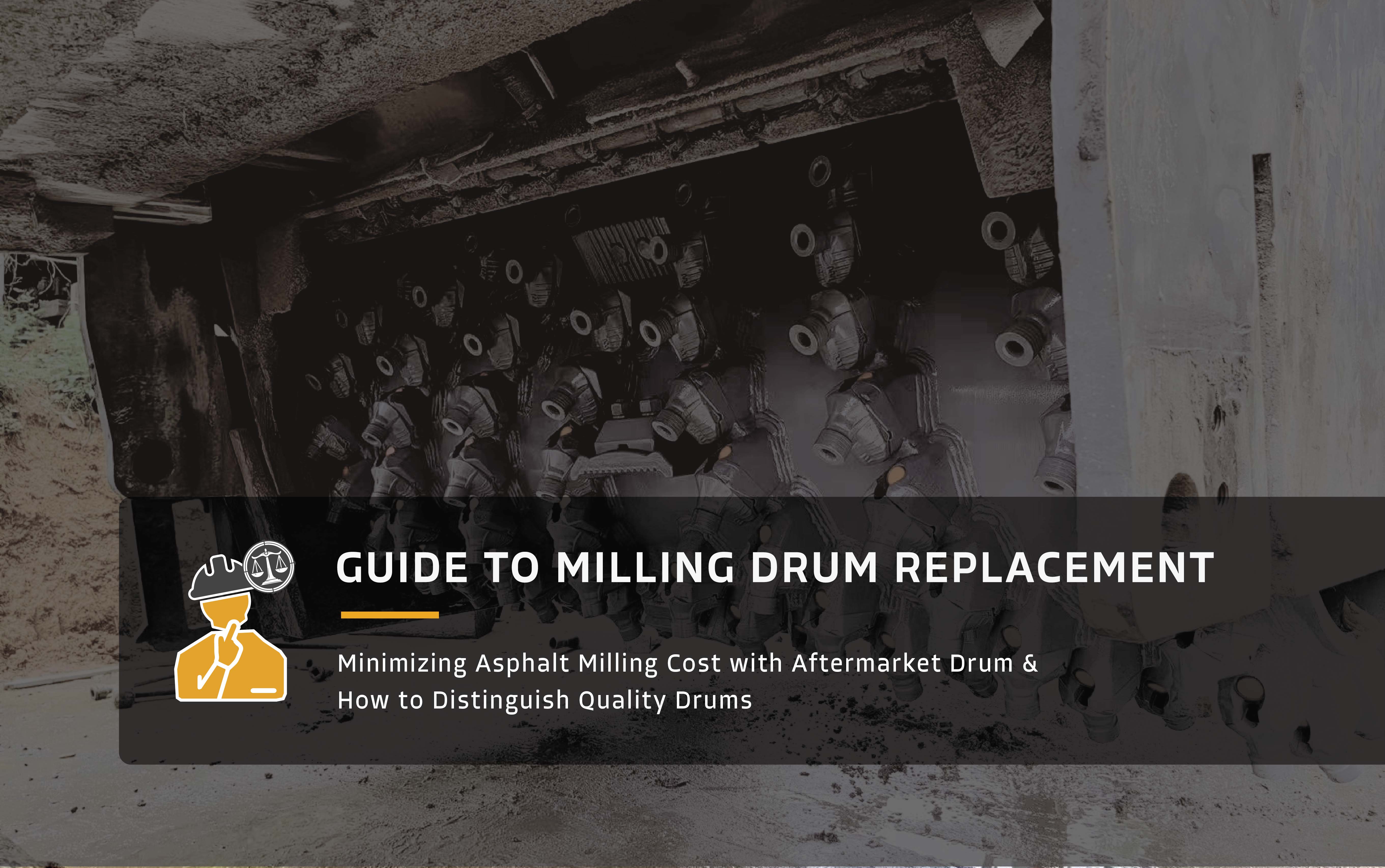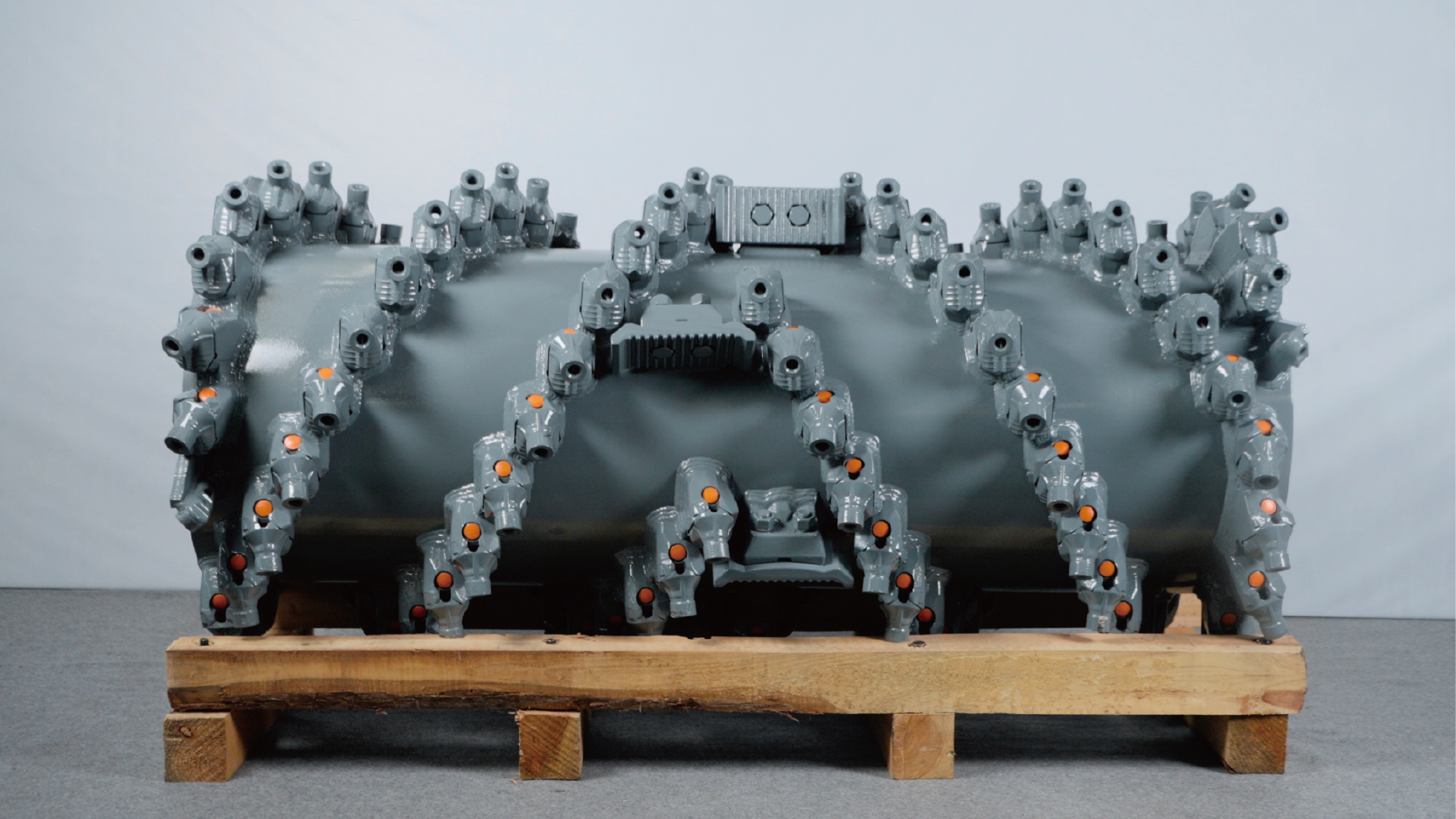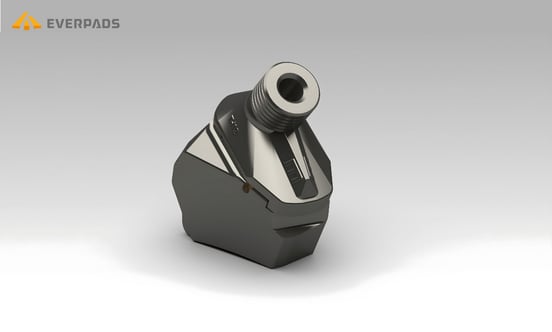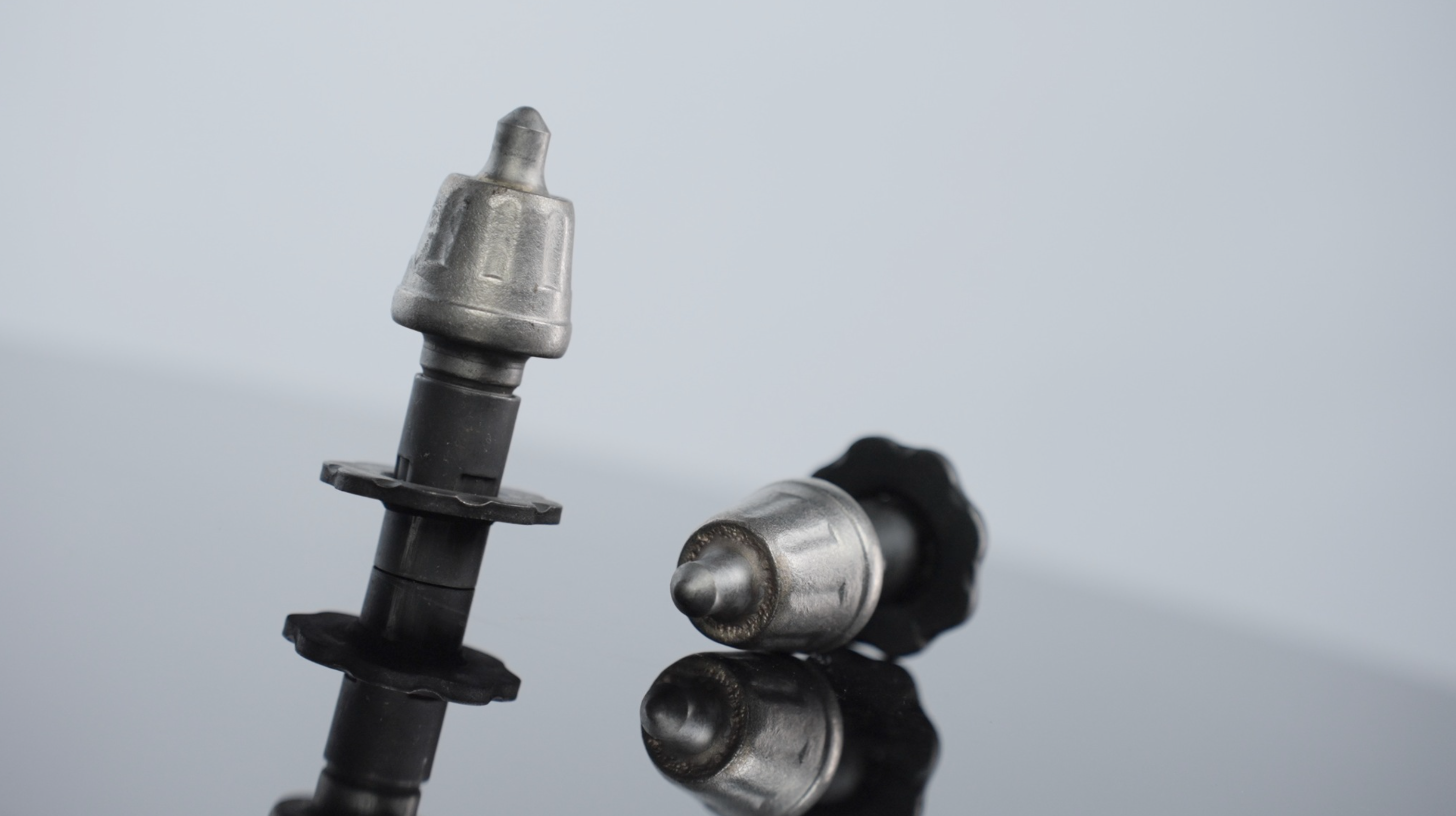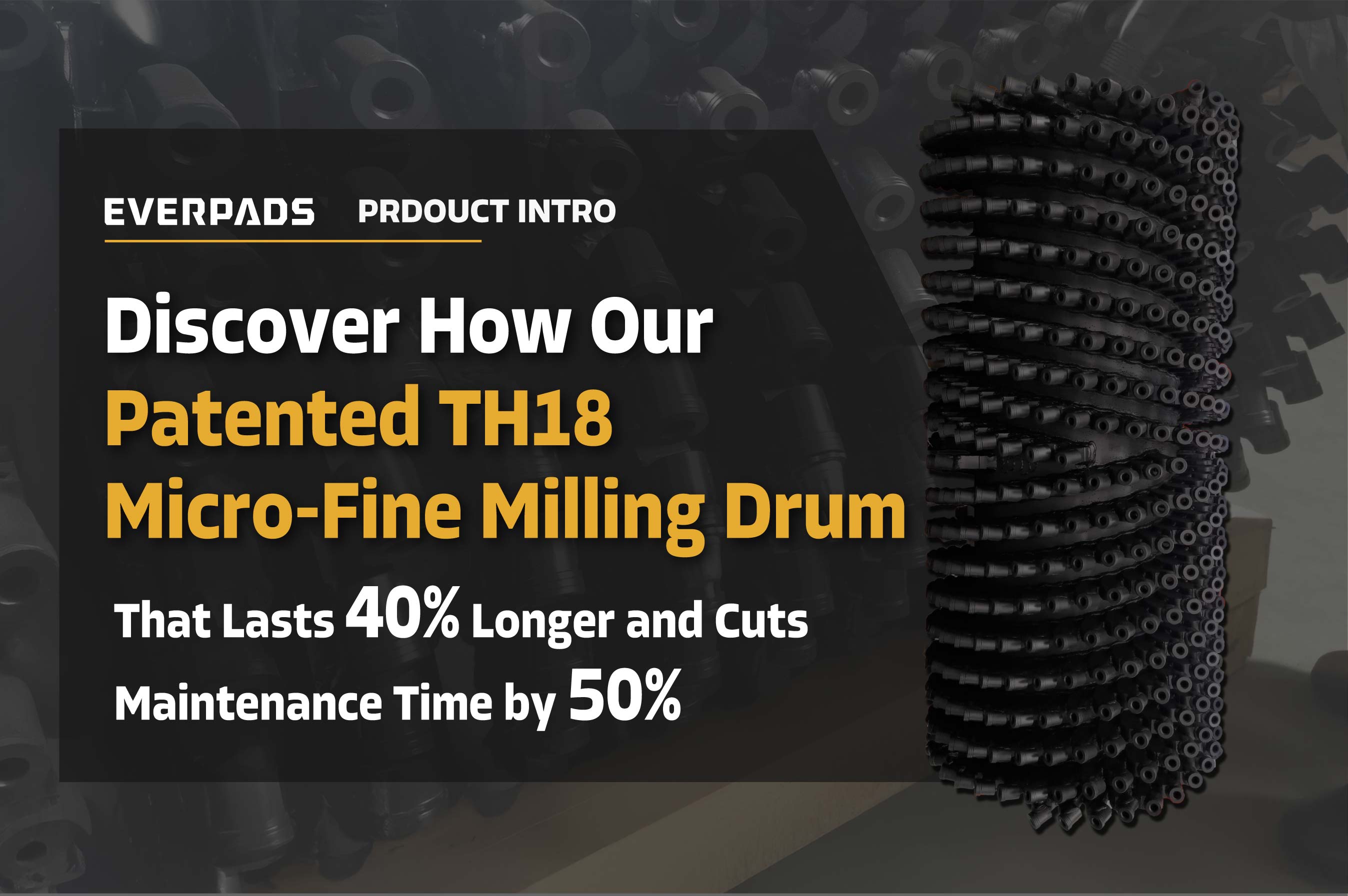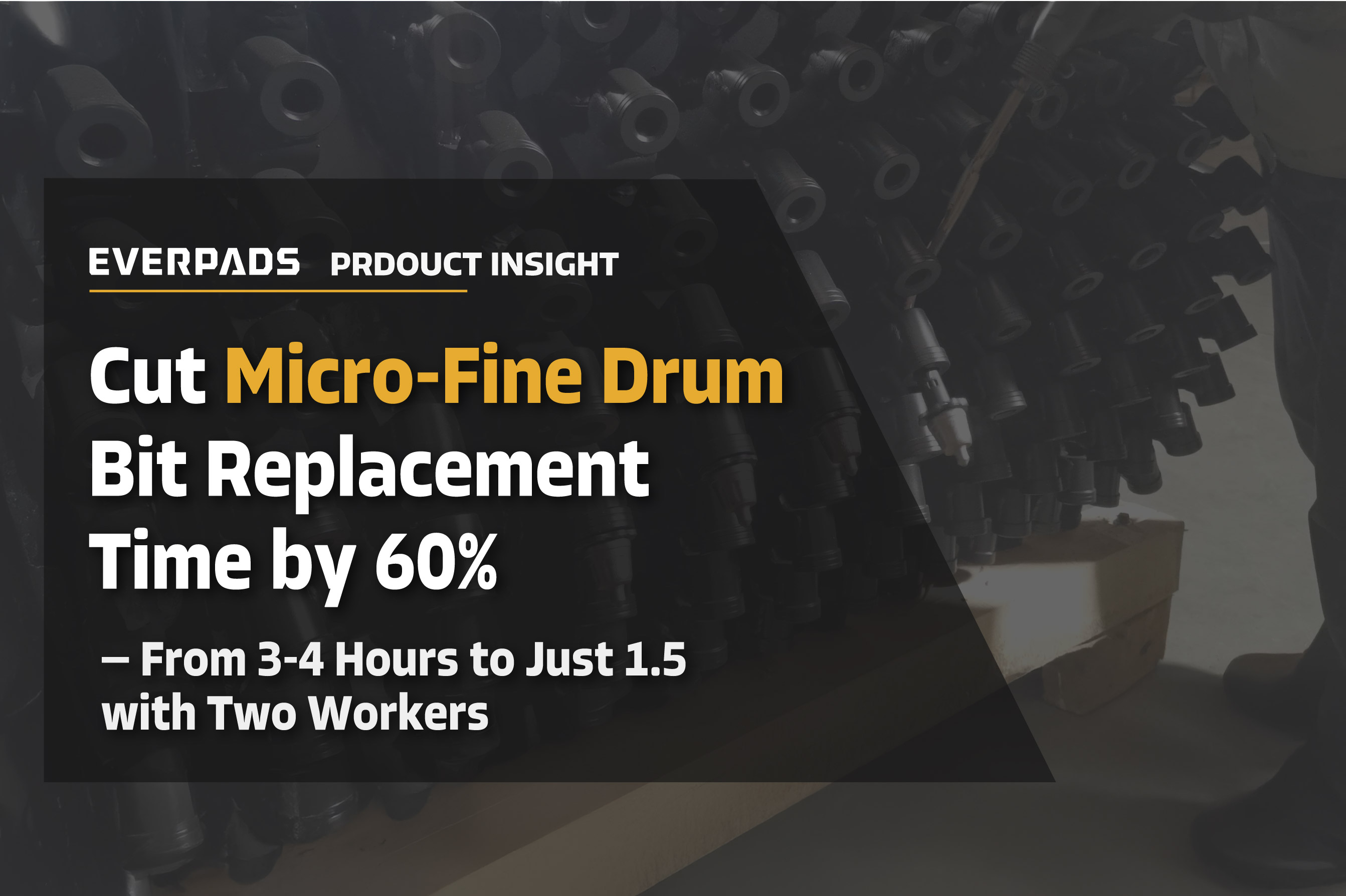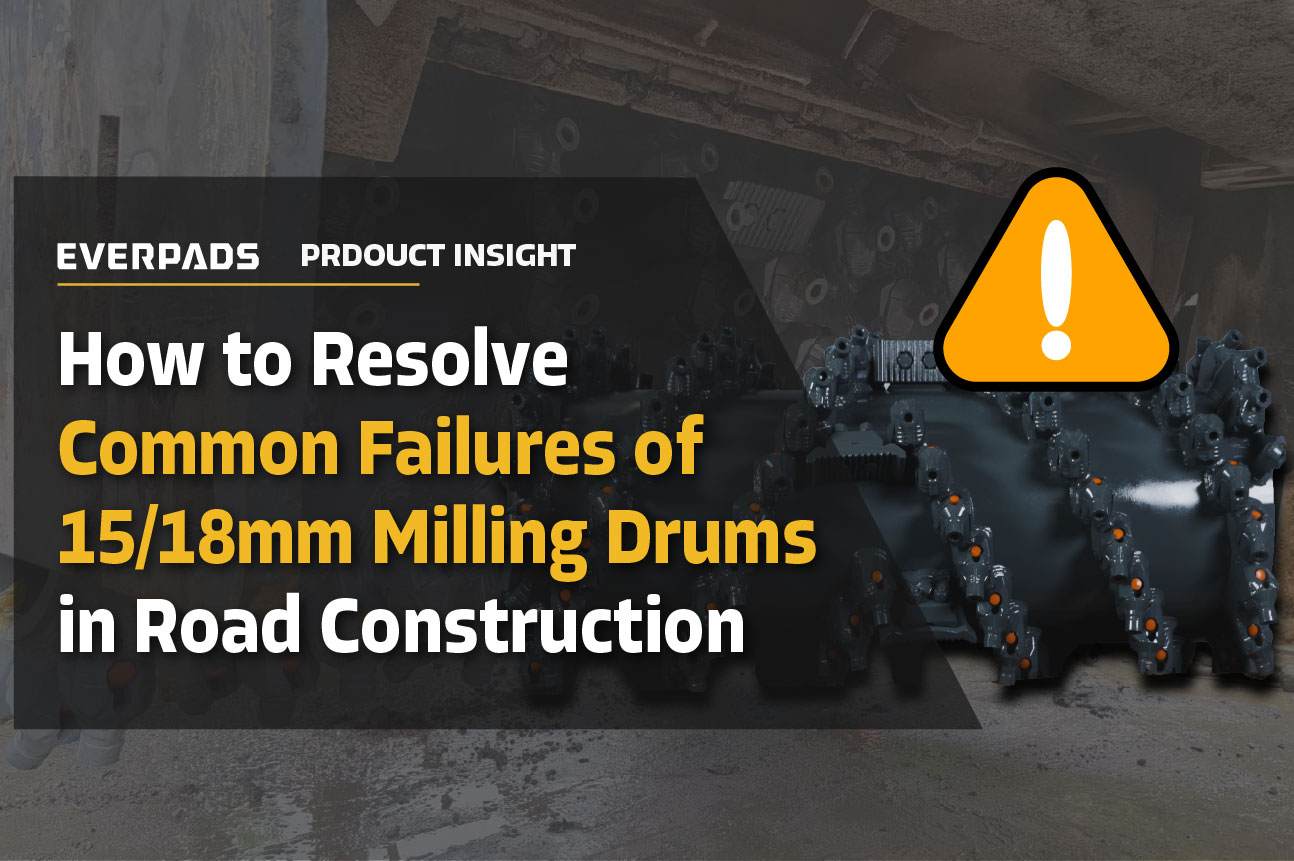With three decades of expertise in the road construction sector, we have observed that OEM 15mm standard milling drums for Cold Milling Machines are typically 2 to 3 times more costly than their aftermarket counterparts, with minimal differences in quality when compared to high-quality aftermarket options. Therefore, most of the contractors will seek alternative solutions in the aftermarket. However, selecting a high-quality aftermarket milling drum can be a significant challenge.
The primary goal of this article is to provide you with the necessary knowledge and tools to assess aftermarket milling drums effectively. By doing so, you can make informed decisions, ensuring significant reduction in your maintenance expenses in asphalt milling.
[Reenergize Your Asphalt Milling Machine: Is Replacing the Drum Worth It? Or Replace the Entire Machine]
Table of Contents:
1. Understanding the Risks of Inferior Aftermarket Drums
2. How to Assess Aftermarket Milling Drums?
3. How to Evaluate a Manufacturer's Capabilities in Milling Drum Production?
4. Taking the Next Steps
Understanding the Risks of Inferior Aftermarket Standard Drums

Choosing inferior aftermarket drums can lead to poor milling results, characterized by uneven surfaces and imprecise cuts. This not only compromises the quality of the roadwork but also increases the likelihood of needing corrective work, which can escalate project costs and extend deadlines. Such poor outcomes can diminish client satisfaction and harm the reputation of your contracting business.
How to Assess Aftermarket Standard Milling Drums?
When it comes to the longevity and performance of milling drums, details are paramount. With 20 years as a manufacturer, we've gathered all the critical aspects to provide you with comprehensive criteria that you need to consider when selecting an aftermarket drum.
- Tool Holder System maintenance: Interval and Routine Screw Tightening:
The maintenance frequency of screw tightening significantly affects the service life of milling drums, applicable to both OEM and aftermarket models. Frequent maintenance can lead to a shorter lifespan of the drum, as each tightening incrementally wears down the screw hole in the base. OEM drums typically withstand up to fifteen tightenings, while average aftermarket drums may only tolerate about ten. If the holders on the drum loosen during operation and are not promptly tightened, the drum base may wear out faster than anticipated, increasing the risk of premature failure.
.Impacting Drum Longevity: The lower the frequency of screw tightening, the longer the service life of a drum, assuming other designs and quality are similar. Additionally, the easier it is for the holder to become loose, the more likely the drum will fail prematurely.
.Assessing Tightening Frequency Requirements: To understand how often the holders need tightening, ask suppliers about the number of operating hours their drums can endure before maintenance is required. Pro tip: Evaluate the design of the quick-change tool holder to ensure it incorporates proprietary technology that addresses issues related to frequent tightening. - Assessing Contact Surface Between Tool Base and Tool Holder: Premature drum failure often stems from wear at the base hole and the contact area designed to absorb milling forces. This wear can cause variations in the height and angle of the bases, leading to poor milling results such as uneven patterns.
.Affecting the Stability of a Drum's Service Life: The easier the base hole and contact area with the holder wear, the lower the stability of a drum's service life..Evaluating Base Hole Breakage Resistance: Precise alignment between the holders and bases is crucial for optimal performance. When comparing two drums with similar levels of precise alignment, evaluate whether the geometry of their bases prevents the holder from losing tension against the drum base. Additionally, a larger contact area between the holder and the base can enhance the distribution of milling forces, contributing to overall stability and resistance.oct%2cw3_%E7%B5%82%E7%A8%BF-1.jpg?width=787&height=267&name=(V3)oct%2cw3_%E7%B5%82%E7%A8%BF-1.jpg)
- Base Alignment Coordination: Uncoordinated alignment hinders proper waste removal from the milling chamber, reducing the lifespan of drums, tool holders, and teeth.
.Affecting the Waste Removal Capacity of a Drum: The more proper base alignment, the better the waste removal efficiency.
.How to assess the Base Alignment: Check if the spiral pattern of the base alignment is coordinated and appears capable of scraping materials toward the suction area in the milling chamber.
oct%2cw3_%E7%B5%82%E7%A8%BF_Oct%20Blog%2c%20W3-Spiral%20Pattern.png?width=545&height=307&name=(V3)oct%2cw3_%E7%B5%82%E7%A8%BF_Oct%20Blog%2c%20W3-Spiral%20Pattern.png)
.Affecting the Waste Removal Volume of a Drum: The higher the wall, the greater the volume it can expel. Additionally, the more precisely and consistently the base is welded, the better the waste removal and the improved milling results.
.How to assess the Wall Formed by Base Arrangement: Check that the tool base design features a tall structure, which indicates a higher removal volume. It should also maintain a specific and consistent angle relative to the drum surface to optimize efficiency and extend service life.
Discover how the welding angle affects your tooth performance
oct%2cw3_%E7%B5%82%E7%A8%BF_Oct%20Blog%2c%20W3-Base%20Wall.jpg?width=787&height=309&name=(V3)oct%2cw3_%E7%B5%82%E7%A8%BF_Oct%20Blog%2c%20W3-Base%20Wall.jpg)
If you are curious about Everpads' solution for milling drums, explore this: Revolutionizing Road Construction: Everpads' Gen-E Milling Drum For Cold Milling Machine
How to Evaluate a Manufacturer's Capabilities in Milling Drum Production?
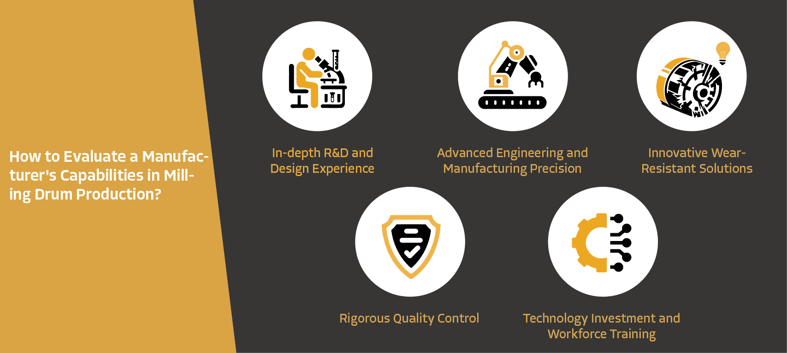
- In-depth R&D and Design Experience: Essential for creating innovative alignment solutions and precision welding processes that guarantee the drum is produced exactly as designed. This experience underpins the ability to anticipate and solve complex design challenges before they impact production.
- Advanced Engineering and Manufacturing Precision: The use of 3D position robot arms and multi-axis machining lathes, specifically tailored for generating milling drums, not only ensures the maintenance of consistent welding angles and adherence to high performance and durability standards but also enables the precise positioning of bases to ensure alignment as designed.
oct%2cw3_%E7%B5%82%E7%A8%BF_Oct%20Blog%2c%20W3-3D%20Arm-08.jpg?width=765&height=345&name=(V3)oct%2cw3_%E7%B5%82%E7%A8%BF_Oct%20Blog%2c%20W3-3D%20Arm-08.jpg)
- Innovative Wear-Resistant Solutions: Manufacturers must possess design and innovation capabilities in base geometry and the arrangement of bases to develop drums that withstand the forces of milling, thereby extending the drum's lifespan. The absence of such capabilities may result in the production of low-quality, OEM-imitation drums.
- Rigorous Quality Control: A Dynamic Balancing Machine plays a vital role in this aspect, as it allows for precise quality assessments of each drum. This rigorous approach to quality control ensures consistency and quality across products, demanding strict checks throughout the manufacturing process.
- Technology Investment and Workforce Training: Staying ahead in technological advancements and ensuring the workforce is adequately trained are crucial for innovation and the continuous refinement of drum production processes. Investment in cutting-edge technology and ongoing staff development are key indicators of a manufacturer's commitment to excellence.
These enhanced insights serve as a comprehensive guide for evaluating the capabilities of drum manufacturers. When assessing potential manufacturers, focus on their solutions' alignment with these guidelines and their ability to address the challenges presented by the manufacturing process and equipment requirements.
Taking the Next Steps
Unlocking Industry Secrets
Our goal is to uncover the intricacies and industry insights that can empower you to make informed decisions. We hope you've gained valuable insights into the world of milling machine drums.
Actions To Take
Examine your next milling drum with the tips above!
.png?width=698&height=417&name=%E5%AE%98%E7%B6%B2logo%20(1).png)
